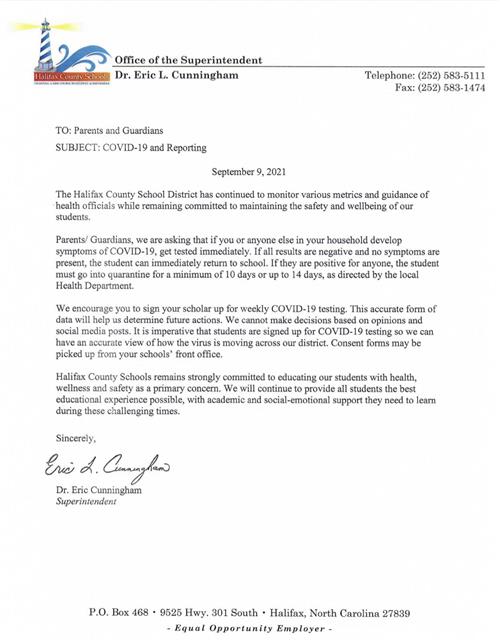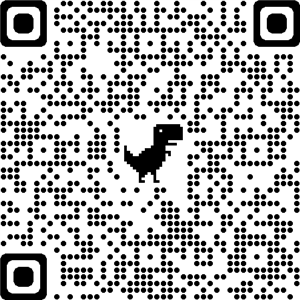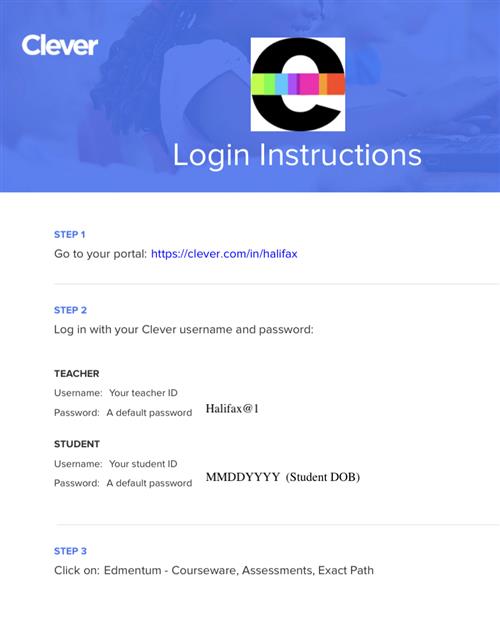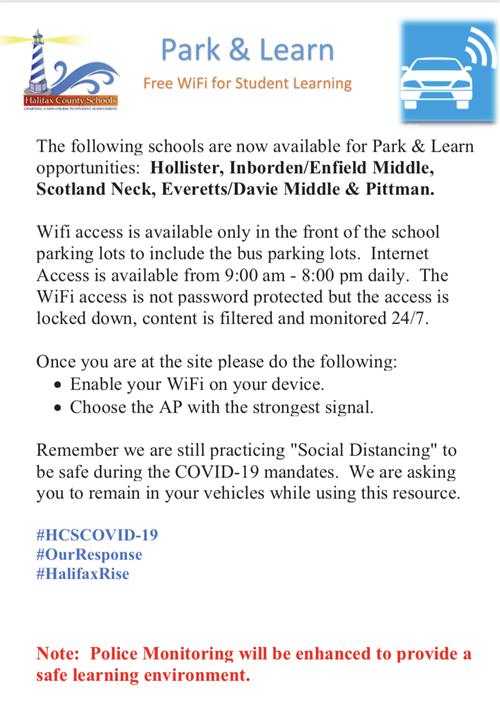Welcome to Nurse Harris’s Health Room
Hello to the students, families, staff and community of Northwest Collegiate and Technical Academy. I hope that everyone is well and safe.
When we left school on March 13th, I had no idea what was going to happen in the weeks ahead. We still do not have any guarantees about what is ahead but we are adjusting to our "new normal". I miss every one of you and have decided to use this health room to reach out to you. I want to provide information that I am guessing you need. If there is other information you would like to see or you have questions - please e-mail me at harrisb@as.halifax.k12.nc.us.
I would also like to offer my help to any student or a student's parent/guardians who may have health questions or concerns. Please contact me through my e-mail – harrisb@as.halifax.k12.nc.us and I will get back to you.
This health room is a new endeavor for me and I will be adding updates as needed. Please e-mail me, I would love the feedback, looking for all ideas for content and truly value your contact. Check back frequently for updates.
COVID –19
(Coronavirus Information)
The pandemic caused by Covid-19 has caused everyday life to change for all of us. I hope I will be able to explain about diseases, viruses, how they spread and how to stop their spread. Please read the pages that follow for more information.
Background on COVID-19
In December of 2019 a new and very contagious virus was reported in Wuhan, China. This virus caused most people to have respiratory symptoms which were inconvenient and slowed them down for a few days. They recovered without any medical treatment. For some people, though, the virus caused them to get very sick. Their simple respiratory symptoms became very serious, they had a hard time breathing and they needed very aggressive medical treatment. Sometimes it caused people to died.
So many people were getting sick that organizations who watch for illness trends all over the world started to get worried and watched Wuhan very carefully. This was when we began to talk about how to avoid getting this new illness. To understand the things, we are being asked to do now we need to understand some things about diseases, how diseases spread and what works to stop disease spread.
What causes diseases?
Many infectious diseases are caused by bacteria or viruses. Each are microscopic entities that, under certain conditions can make its host (a person) sick. Bacteria and viruses are very different from each other. They cause illness differently and are treated differently. Bacteria can often be cured with antibiotics or antibacterial agents. Antibiotics and antibacterial agents do not work on viruses. There are some antiviral medications but they do not work nearly as well on viruses as antibiotics do on bacteria. Antiviral medications can also have a lot of side effects. Some dangerous viruses are nearly non-existent now due to the creation of immunizations. An immunization makes the host (person) immune or resistant to the particular virus an immunization is designed to battle. Immunizations has been very successful in eliminating the threat of diseases caused by viruses including polio, smallpox, chicken pox, mumps, measles, rubella, hepatitis A, hepatitis B, and helping to control seasonal influenza (flu). It takes a long time to create a new immunization but research in going on right now for an immunization to stop Covid-19.
Understanding Viruses
A virus is a disease causer (pathogen) which looks and acts like a little spaceship, carrying a scroll of important information (RNA). This RNA is the instruction manual, directing the virus on how to make copies of itself and continue on its mission of infecting people. The virus thrives once it has entered a person's cells, while making this host person sick. The space ship transports the important RNA information until it finds a person to infect. Once a virus enters a person's body the spaceship virus quickly penetrates into the body's cells and the virus begins to make copies of itself. The virus uses the cell's own structures and mechanisms to create illness. It is important to remember that the spaceship, which carries the RNA is made up of a protective coat which can be destroyed by soap.
The key to disease prevention is to not let a virus into your body. So how does it get in? Through openings to your respiratory system (the system in charge of your breathing). Openings to your respiratory system include your nose, your mouth and your eyes.
When someone is infected by Covid-19 - even if they do not have symptoms, some Covid-19 virus spaceships leave their infected host to find more people to infect. They leave the same way they got in - through the nose, through the mouth and less actively the eyes. When someone coughs, sneezes, laughs or talks viruses are launched out of the infected person. Simply breathing can launch virus spaceships in search of others to infect. Depending on how forceful the spaceship is launched determines how far it will travel. A forceful cough or sneeze will launch viruses further than a gentle breath. Those virus spaceships are now in the air waiting to be breathed in by some unsuspecting healthy person or land on an object, just waiting to be picked up by someone's hand. Once that virus is on a hand/fingers, that now dirty hand only has to touch somewhere on the face and an infection has occurred.
How to stop COVID-19 Infections
Covid-19 is a newly discovered virus. There is no immunization to protect us from it. By understanding how viruses work we can now understand the advice being given to protect ourselves and our families and to stop infections.
WASH YOUR HANDS
By understanding how the virus/disease spreads the simplest and most effective thing you can do is to wash your hands with soap and water. Remember, the material making up the spaceship of the virus is dissolved by soap - dissolve a spaceship and the contents can no longer travel, it has no way of getting into your body and cannot make you sick. Effective HANDWASHING involves making lots of soap suds and scrubbing all parts of your hands, fingers and nails for at least 20 seconds. When soap and water are not available a hand sanitizer with more that 60% alcohol is effective. Apply the HAND SANITIZER and rub all parts of your hands until your hands are dry.
DO NOT TOUCH YOUR FACE
Remember that touching your face with your hands is how the virus can enter your body. You have to practice not touching your face. Be aware of how much you touch your faces, and why you touch your face. On average people touch their face 25 times an hour. Do you have hair that falls in your face? Is it a habit that you push it out of the way? Studies have found that people who wear contact lenses touch their faces many more times than people who do not, people who wear glasses touch their glasses very frequently as well - do your glasses need to be adjusted? Become very aware of when and why you touch your face and try to decrease these habits. Do not touch your face!
SOCIAL DISTANCING
By being aware of how the virus spreads from one person to another we have begun to practice social distancing. Remember the virus leaves the infected person through coughs, sneezes, laughing, talking and breathing. That virus spaceship can be projected 6 feet from that person. Social distancing means we place ourselves at least 6 feet from other people to avoid being close enough to intercept a virus spaceship.
CLOSED SCHOOL, MALLS, RELIGIOUS SERVICES, CANCELLED SPORTING EVENTS AND OTHER PLACES LARGE GROUPS OF PEOPLE GATHER
It is impossible to maintain social distance at school or other places with large groups of people. That 6-foot zone you are trying to maintain cannot be consistently maintained when you are in a crowded situation. Drastic measures to close our community institutions, where large groups gather has happened. People are not allowed to meet in groups larger than 10 people. These measures allow you to maintain your social distance of 6 feet and decrease the chances of you coming in contact with a person who is infested with Covid-19.
WEARING NON-MEDICAL MASKS IN PUBLIC
The CDC is recommending the use of non-medical masks or face coverings when going out in public. It is hoped this with slow the spread of Covid-19. Remember while wearing a mask you must still practice social distancing, remember not to touch your face and continue washing your hands frequently.
SELF QUARANTINE
If someone is experiencing symptoms of Covid-19 or have been to an area which has high Covid-19 activity they are asked to self-quarantine for a period of 14 days to ensure they do not infect other people. That means they must completely stay away from other people for 14 days so they do not risk spreading the disease.
HARDSHIPS
This has been so hard for everyone. We miss our social interactions, education has been disrupted, people have not been able to go into their work places, we are unable to support businesses and businesses are struggling, people have lost jobs and there is a lot of worry.
Symptoms of COVID-19
Covid-19 is a disease making many people sick. At first, we thought that elderly people would get really sick but we now know that anyone over 20 years of age can get really sick. A few young people under 20 years of age have also gotten really sick but that is still rare.
Remember that most people will recover from Covid-19.
Covid-19 is a novel (new) coronavirus. Its most common symptoms include
- fever
- cough
- shortness of breath (having a hard time breathing, even when doing very simple things).
Other symptoms could include:
- headache
- body aches/ muscle pain
- chills
- repeated shaking with chills
- sore throat
- change in ability to taste or smell
Once a person is exposed to the Covid-19 virus it will take between 2 and 14 days for that person to begin to show symptoms. That person can be spreading the disease without having symptoms.
If symptoms develop call your doctor. Doctors are providing great advice and care via telehealth or virtual visits. Talk with your doctor about over the counter medications for fever control and pain management. Drink lots of fluids to stay hydrated and rest. Remember that most people with Covid-19 get better at home, so testing may not be required and there is no treatment to shorten the course of the illness. Keep in touch with your doctor and discuss red flags that would tell you to go to the hospital - an increase in shortness of breath means you need to go to the emergency room.
The CDC has great resources for caring for yourself during the illness as well as caring for other household members who may have Covid-19.
Vocabulary of COVID-19
There are some strange new words that come up when discussing Covid-19. Here are some with their definition. If there are others you wonder about let me know at harrisb@as.halifax.k12.nc.us
Asymptomatic - not showing or feeling any symptoms of illness
Afebrile - not having a fever, body temperature below 100.4 (F)
Carrier - a person who gives disease to others. They may or may not have symptoms.
CDC - Center for Disease Control and Prevention - the United States of America's organization in charge of monitoring and suggesting ways to stay healthy and how to manage diseases.
Community Spread - This occurs when disease is spread within a community. There is no outside source for the disease, it is coming from within a community.
Contagious - this describes a disease that can spread from one person to another. It can also describe the person who has the disease - they are able to spread the disease to someone else. Technically this is the spread of disease through physical contact.
Coronavirus - a large group of viruses which cause disease in both humans and animals. The diseases caused by Coronaviruses affect the respiratory system (breathing) and digestive system (eating). Some Coronaviruses are very common and harmless (the common cold) or much more serious (SARS - Severe Acute Respiratory Syndrome, or Covid-19)
Covid-19 - this is a novel (new) Coronavirus which was first identified in December 2019. Covid-19 stands for COronaVIrus Disease - 2019 .
Diagnose - a system for determining if illness is present and what the illness is. Involves looking at symptoms and only Doctors can do this.
Droplets - small particles of moisture which are produced when someone coughs or sneezes. These particles can contain the Covid-19 virus, allowing it to spread from one person to others
Epidemic - happens when a large number of people in a certain area all get sick with the same disease
Febrile - having body temperature over 100.4 (F)
immune - a person's body can develop a resistance to a virus through vaccines or having had and survived an infection with a virus. That person will not develop illness if they are exposed to the virus
incubation period - this is the time from when a person was first exposed to illness and when their first symptoms develop. The incubation period for Covid- 19 can be from 2 to 14 days. During the incubation period for Covid-19 people can be infectious without having symptoms or knowing they are sick.
infect, infection, infectious - to introduce a disease producing organism to a person. Describes the process of disease development (infection), An infectious person is able to transmit the disease to others. Infectious is technically used when talking about a disease which is spread by microorganisms in the air or water, without needed person to person contact to spread.
Isolate - the process of keeping an ill person away from well people
Mask - a barrier used over the mouth and nose to decrease the risk of the wearer getting airborne illnesses. According to the CDC, during the Covid-19 pandemic masks should be worn if a person has the disease to decrease their spreading the disease and by people caring for the person with Covid-19 to protect them from the virus. CDC is now recommending that anyone going out in public wear a non-medical mask to decrease the spread of Covid-19
Novel virus - a new virus, can be dangerous because no one is immune to it and there is no information about the virus
Outbreak - sudden occurrence of a disease
Pandemic - the same disease is being seen all over the world
Pathogen - a microscopic organism which can cause illness
PPE - Personal protective equipment. This includes the equipment you need to protect yourself in a specific situation. It may include masks, gloves, gowns, hats, shoe covering.
Quarantine - isolation of a healthy person who may have been exposed to an illness. Quarantine will last for the full incubation time of the pathogen
Screening - a quick measure of the possibility that a person may have the virus. Example include checking someone's temperature or asking questions specific to travel and or possible exposure to the virus
Self-isolate - to put oneself into quarantine because of a believe that one was exposed to Covid-19 and may be contagious
Social distancing - to position yourself at a safe distance from other people, minimizing time spent with other people, minimizing size of groups you place yourself in, maximizing the space between you and another to at least 6 feet - presumed distance droplets would carry if someone coughed or sneezed.
Symptomatic - having physical characteristics of illness. For Covid-19 common symptoms include cough, fever, shortness of breath. Other symptoms can include headache, fatigue, achiness, upset stomach, diarrhea
Test negative/test positive - a test is a chemical study of mucus taken from a person's nose to determine if they have been infected with Covid-19. A Negative test means they do not have Covid-19 and Positive test means that they do have Covid-19.
Telemedicine - using the telephone or the internet to call a Medical provider, conduct a medical assessment of a patient, to make a diagnosis, initiate treatment and /or provide therapy that would traditional be done in the Doctor's office, face to face.
Transmit/transmission - the passing of disease on to another
Treat - an attempt to cure (get rid of) a disease in a sick person or to improve the sick person's symptoms
Vaccine - a substance used to develop immunity in person. This is usually given to a well person in the form of an injection. It will stimulate the body to develop a system which resists the specific disease.
Virtual visit - an encounter with your health care provider which is conducted over the telephone or the internet.
Virus - a disease causing entity, too small to be seen with your eye, which can cause disease.
WHO - World Health Organization - Monitors and directs initiatives to promote health and manage disease throughout the World
Nurse Harris’s Contact Information
Thank you for visiting my Health Room. I appreciate your time and attention to the information I have provided. I passionately believe that well care for children is vital for a strong, healthy future. My purpose is to support children and families through their educational process, ensuring that the schools experiences are safe and healthy for all.
Please know that I am available to you for questions, concerns, needs, complaints, comments or just "Hi, how are you?". Please let me know what you need information on or if you want to discuss a health concern. * Please contact me by e-mail harrisb@as.halifax.k12.nc.us and we can write or chat.















